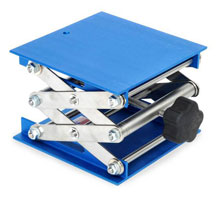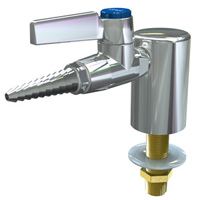| The Home page of ILPI's Safety Data Sheet (SDS) Resource, the leader in SDS information since 1995! | |
| The history and philosophy behind this resource. | |
| A curated collection of books and reference materials concerning Safety Data Sheets and closely related topics. | |
| Paste your plain text SDS into the SDS-Demystifier, and it will be converted into a hypertext-enriched document with links to detailed explanations of each key term. | |
| An extensive list of frequently asked questions about Safety Data Sheets including regulations, content, compliance, and more. | |
| A humorous take on Safety Data Sheet jargon. Fill in the blanks on our entry form to generate a personalized Unsafety Data Sheet to share with your coworkers. | |
| Since 1995, we've maintained this massive curated list of the best places to find Safety Data Sheets on the Internet. | |
| Way more than a glossary, this hypertext-enhanced resource covers hundreds of SDS-related terms and expert knowledge. Each entry includes both the SDS relevance and links to additional authoritative resources. | |
| Archived results of Safety Data Sheet related polls taken by some of our millions of site visitors | |
| You are here! The OSHA regulations behind SDS regulations, including the inspection guidelines and over 400 official interpretations letters under the Hazard Communication Standard | |
| Commercial suppliers of SDS authoring and management software as well as cloud compliance services. | |
| Commercial companies that will create SDS's for your specific needs as well as SDS translation companies. |

Safety signs, banners, and scoreboards? Get yours at Safety Emporium!
| Title: 04/15/2013 - Hazard Communication Standard labeling and SDS for laboratory nuclear standards | |
| Record Type: Interpretation | Standard Number: 1910.1200 |
| OSHA requirements are set by statute, standards and regulations. Our interpretation letters explain these requirements and how they apply to particular circumstances, but they cannot create additional employer obligations. This letter constitutes OSHA's interpretation of the requirements discussed. Note that our enforcement guidance may be affected by changes to OSHA rules. Also, from time to time we update our guidance in response to new information. To keep apprised of such developments, you can consult OSHA's website at https://www.osha.gov. |
April 15, 2013
Mr. Elliot Stein
[Address Withheld]
Dear Mr. Stein:
Thank you for your December 12, 2012, letter to the Occupational Safety and Health Administration (OSHA). Your letter was referred to OSHA's Directorate of Enforcement Programs for a response to your specific questions regarding the Hazard Communication standard (HCS), 29 CFR 1910.1200. This letter constitutes OSHA's interpretation only of the requirements herein, and may not be applicable to any questions not delineated within your original correspondence. Your paraphrased questions and our responses are below.

Safety Emporium carries all kinds of laboratory stands and supports such as this handy scissors jack.
Background: You work for a U.S. Department of Energy (DOE) analytic chemistry laboratory that creates standards for uranium, plutonium and thorium that are sold to other facilities. A few of the standards have very low levels of radiation and may not qualify under U.S. Department of Transportation (DOT) requirements as a radioactive material. These standards have chemical as well as ionizing radiation properties.
Question 1: Must all the chemicals we ship meet all the requirements of the OSHA Hazard Communication Standard including labels and Safety Data Sheets (SDSs)?
Response: Under section 1910.1200(b)(3), only certain HCS requirements are applicable to laboratories. A laboratory that produces nuclear standards is considered a laboratory for the purposes of the HCS.1 Section (b)(3)(iv) of the HCS requires laboratory employers that ship hazardous chemicals to ensure that any containers of hazardous chemicals leaving the laboratory are labeled in accordance with paragraph (f)(1), and that safety data sheets are provided in accordance with paragraphs (g)(6) and (g)(7).
>However, under both the recently revised HCS (HCS 2012) and the prior HCS (HCS 1994), ionizing and non-ionizing radiation are excluded from coverage under 29 CFR 1910.1200(b)(6)(xi). When the laboratory ships nuclear standards that have only ionizing radiation hazards, it is not required to comply with the HCS requirements. Nevertheless, it has been OSHA's longstanding position that if the radioactive material contains another type of chemical hazard that is not the result of the radioactivity of the chemical, the HCS requirements apply. See 59 Fed Reg. 6126, 6155 (Feb. 9, 1994) (final rule) (when another type of hazard is presented along with the [radioactive] material (e.g., a container with a biological sample packed in a hazardous solvent), then the container would be subject to the requirement of the HCS for the other hazardous chemical
); 53 Fed. Reg. 29833, 29841 (Aug. 8, 1988) (proposed rule) (when a radioactive chemical presents other types of chemical hazards that are not the result of the radioactivity of the chemical, it will be covered for those hazards
). Therefore, when the nuclear standards that are shipped have a chemical hazard that is not the result of the radioactivity of the chemical, the standards must be labeled for those chemical hazards and have a Material Safety Data Sheet (MSDS) or SDS.2
Question 2: Are tags an alternative for labels for small containers?
Response: As noted above, when a laboratory ships a hazardous chemical, it is subject to the HCS labeling requirements in paragraph (f)(1). Paragraph (f)(1) states:
The chemical manufacturer, importer, or distributor shall ensure that each container of hazardous chemicals leaving the workplace is labeled, tagged (emphasis added) or marked
.
Accordingly, it is permissible to tag a label to the immediate container of the hazardous chemical. When tags are used, they must be affixed in such a manner that they do not become separated from the container.
Question 3: Must all chemical containers (liquids, solids and gases) in the facility be labeled per the OSHA Hazard Communication standard?

Safety Emporium has all kinds of lab equipment such as valves and faucets.
Response: We are unsure from your letter if the facility you are asking about is a government owned government operated or a government owned contractor operated. OSHA has a memorandum of understanding with DOE concerning government owned contractor operated facilities. This question is being answered assuming that you are asking about a government owned government operated facility.
As mentioned above, the coverage of laboratories is limited under the HCS. Under section 1910.1200(b)(3)(i), laboratories are required to ensure that labels on incoming containers of hazardous chemicals are not removed or defaced. This requirement applies regardless of the physical state of the chemical.
A workplace may contain many work areas that are not part of the actual laboratory. In work areas other than the laboratory itself, the full HCS requirements are applicable, including the HCS's workplace labeling requirements under paragraph (f)(6). Therefore, even though the DOE facility in which you work contains a laboratory that produces nuclear standards, there may be a number of other work areas within the facility where the paragraph (f)(6) workplace labeling requirements must be followed. In those work areas, the workplace labeling requirements must be complied with regardless of the physical state of the chemical.
Thank you for your interest in occupational safety and health. We hope you find this information helpful. OSHA's requirements are set by statute, standards, and regulations. Our letters of interpretation do not create new or additional requirements but rather explain these requirements and how they apply to particular circumstances. This letter constitutes OSHA's interpretation of the requirements discussed. From time to time, letters are affected when the Agency updates a standard, a legal decision impacts a standard, or changes in technology affect the interpretation. To assure that you are using the correct information and guidance, please consult OSHA's website at https://www.osha.gov. If you have further questions, please feel free to contact the Office of Health Enforcement at (202) 693-2190.
Sincerely,
Thomas Galassi, Director
Directorate of Enforcement Programs
cc: Regional Administrator, Region V
Enclosure: OSHA letter to Dr. Aldo Franco, March 12, 2012
1 However, because the facility produces nuclear standards for commercial sale, it is not considered a laboratory within the meaning of OSHA's laboratory standard. See 29 C.F.R. 1910.1450(a)(1) and (b). The facility in which you work may have a workplace that does meet the definition of laboratory under OSHA's laboratory standard. Therefore, we have included our recent letter of interpretation to Dr. Aldo Franco concerning the definition of laboratory use and the label requirements for laboratory containers under section 1910.1450.
2 Manufacturers shall be in compliance with HCS 2012 and ship hazardous chemicals with HCS 2012 labels and SDSs by June 1, 2015. 29 C.F.R. 1910.1200(j)(2).
The original official public domain version of this document is available from OSHA at https://www.osha.gov/laws-regs/standardinterpretations/2013-04-15.